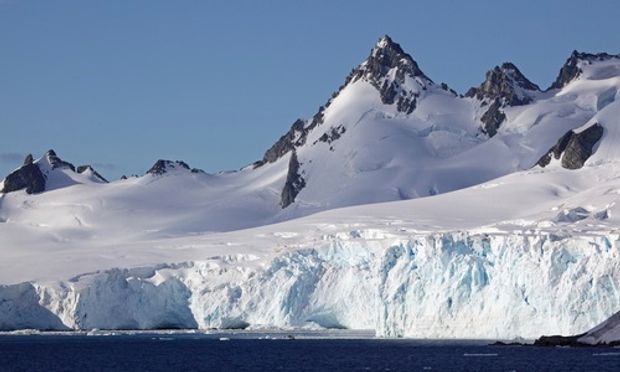Some of the world’s most amazing sights are gradually disappearing because of climate change..
Here, courtesy of Fodor’s Travel, are five places that are on the brink of disappearing or changing forever because of pollution. If you’ve thought of traveling to these destinations, you might want to see them soon.
1. Antarctica—The frozen continent of Antarctica is thawing. While it may be some time until it melts away, go while it’s still possible to see incredible wildlife, immense ice shelves and outstanding mountain ranges. Meanwhile, efforts are in place to minimize the environmental impact of tourism. Cruise ships carrying more than 500 passengers are no longer allowed to sail the straits. Some stricter limitations are on the docket from the International Association of Antarctic Tour Operators, an organization devoted to promoting safe, responsible tourism. Book a cruise through Abercrombie and Kent for an eco-friendly journey.

Antarctica. Photo credit:Shutterstock
2. Mt. Kilimanjaro, Tanzania—Few spots in the world are as picturesque as the volcanic mountain of Kilimanjaro, Africa’s tallest peak. A study published by the Proceedings of the National Academy of Sciences says those snows are likely to be gone in 20 years. During the last century, 85 percent of the ice cap disappeared. To have the best Kilimanjaro climbing experience, strongly consider an operator like Alpine Ascents that’s registered, has qualified guides, has porters’ interests at heart and follows an environmental policy.

Mt. Kilimanjaro, Tanzania. Photo credit:Shutterstock
3. Great Barrier Reef, Australia—Known as one of the world’s premier diving sites, the Great Barrier Reef is suffering from rising ocean temperature, water pollution and fishing, which are causing erosion to the largest coral reef in the world. According to the Intergovernmental Panel on Climate Change, the rate of disintegration to the 7,000-year-old reef is unprecedented. Some scientists say that the reef could be dead within the next 40 years, taking a significant amount of sea life along with it. With such a unique and spectacular array of coral, fish and other marine life, travelers should put this on their must-see list. But when visiting be sure to look and not touch—the coral is easily damaged.
The Great Barrier Reef, Australia. Photo credit:Shutterstock
4. Taj Mahal, Agra, India—The world’s most elaborate mausoleum, built in the 17th century in memory of Mughal emperor Shal Jahan’s favorite wife, Mumtaz Mahal, welcomes 3 million visitors a year. However, the United Nations Environmental, Scientific and Cultural Organization and some preservation groups are urging India to close the Taj Mahal as air pollution, shoddy restoration, population explosion and tourism’s impact have been eroding the structure’s exterior.

The Taj Mahal, Agra, India. Photo credit:Shutterstock
5. The Dead Sea, Israel and Jordan—The salty, buoyant body is evaporating, sinking about three feet a year because border countries have been diverting water from the Dead Sea’s main tributary for 50 years. The suggested answer: the “Red-Dead” project, which will channel the Red Sea into the Dead Sea. A group of local environmentalists, Friends of the Earth Middle East, claim the project will irrevocably compromise the Dead Sea’s ecosystem. If a solution isn’t put into place, the famed sea could dry up within the next 40 years.

The Dead Sea, Israel and Jordan. Photo credit:Shutterstock
Source: EcoWatch


